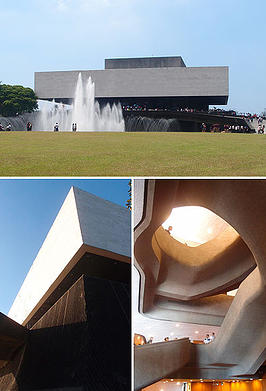The culture of the Philippines reflects the country's complex history. It is a blend of the Malayo-Polynesian and Hispanic cultures, with influence from Chinese.
The Philippines was first settled by Melanesians; today they preserve a very traditional way of life and culture, although their numbers are few. After them, the Austronesians or more specifically, Malayo-Polynesians, arrived on the islands. Today the Austronesian culture is very evident in the ethnicity, language, food, dance and almost every aspect of the culture. These Austronesians engaged in trading with China, India, Japan, the Ryukyu islands, the Middle East, Borneo, and other places. As a result, those cultures have also left a mark on Filipino culture.
When the Spanish colonized the islands, after more than three centuries of colonization, they had heavily impacted the culture. The Philippines being governed from both Mexico and Spain, had received a little bit of Hispanic influence. Mexican and Spanish influence can be seen in the dance and religion many other aspects of the culture. After being colonized by Spain, the Philippines became a U.S. territory for about 40 years. Influence from the United States is seen in the wide use of the English language, and the modern pop culture.



The Cultural Center of the Philippines(Filipino: Sentrong Pangkultura ng Pilipinas, or CCP) is a government owned and controlled corporation established to preserve, develop and promote arts and culture in the Philippines.
The CCP was established through Executive Order No. 30 s. 1966 by President Ferdinand Marcos. Although an independent corporation of the Philippine government, it receives an annual subsidy and is placed under the National Commission for Culture and the Arts for purposes of policy coordination.
The CCP is headed by an 11-member Board of Trustees, currently headed by Chairperson Emily Abrera. Its President is Raul Sunico.
The CCP provides performance and exhibition venues for various local and international productions at its eponymous 62-hectare complex located in the Cities of Pasay and Manila. Its artistic programs include the production of performances, festivals, exhibitions, cultural research, outreach, preservation, and publication of materials on Philippine art and culture. It holds its headquarters at the Tanghalang Pambansa (English: National Theater), a structure designed by National Artist for Architecture, Leandro V. Locsin. Locsin would later design many of the other buildings in the CCP Complex.[4]

